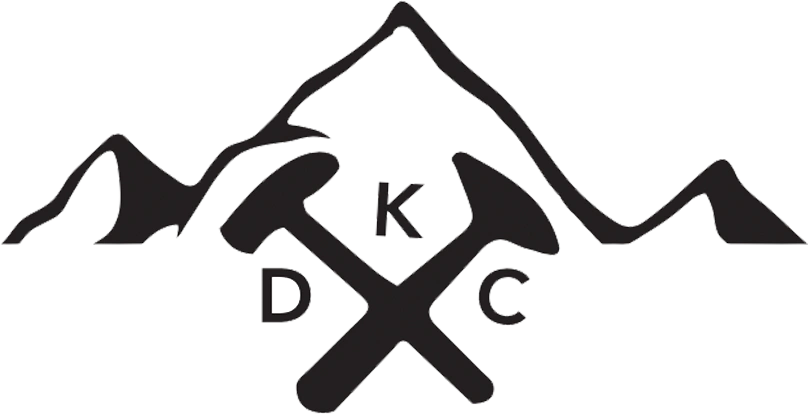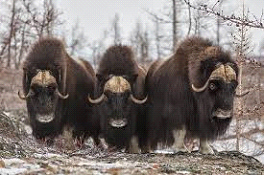During the Pleistocene period, muskoxen were much more widespread. Fossil evidence shows that they lived across the Siberian and North American Arctic, from the Urals to Greenland.[17] The ancestors of today’s muskoxen came across the Bering Land Bridge to North America between 200,000[14] and 90,000 years ago.[15] During the Wisconsinan, modern muskox thrived in the tundra south of the Laurentide Ice Sheet, in what is now the Midwest, the Appalachians and Virginia, while distant relatives Bootherium and Euceratherium lived in the forests of the Southern United States and the western shrubland, respectively.[13] Though they were always less common than other Ice Age megafauna, muskox abundance peaked during the Würm II glaciation 20,000 years ago and declined afterwards, especially during the Pleistocene/Holocene extinction event, where its range was greatly reduced and only the populations in North America survived. The last known muskox population in Europe died out in Sweden 9,000 years ago,[12] and the last one in Asia, which lived on Siberia’s Taymyr Peninsula, about 2,000 years ago.[18]
After the disappearance of the Laurentide Ice Sheet, the muskox gradually moved north across the Canadian Arctic Archipelago, arriving in Greenland from Ellesmere Island at about 350 AD, during the late Holocene. Their arrival in northwestern Greenland probably occurred within a few hundred years of the arrival of the Dorset and Thule cultures in the present-day Qaanaaq area. Human predation around Qaanaaq may have restricted muskoxen from moving down the west coast, and instead kept them confined to the northeastern fringes of the island.[28]
In modern times, muskoxen were restricted to the Arctic areas of Northern Canada, Greenland, and Alaska. The Alaskan population was wiped out in the late 19th or early 20th century. Their depletion has been attributed to excessive hunting, but an adverse change in climate may have contributed.[29][30] However, muskoxen have since been reintroduced to Alaska.
This is a very rare and beautiful matieral, count it a rare privedge to have this as part of your collection.
Moose are the largest of the deer family (Cervidae). Once moose antlers hit the ground they will begin to deteriorate and loose the colour that the moose had adorned them with. Rodents, squirels and porcupines will chew the antlers to gain the protein or minerals from the bone.
Antler shed hunting is a very popular pastime in Alaska for those who live near wintering grounds. It takes an enormous amounts of time scouring the woods and fields looking for sheds.
Antlers are used for many things in life in Alaska but antlers can also be turned into beautiful art pieces.
Dall Sheep horns are a rare and very precious material. Dall sheep are found in the Kenai Mountains, the Tok area, the Chugach Mountains, Mentasta, Nutzotin, and northern Wrangell Mountains, and the Delta Controlled Use Area; also on the north side of the Alaska Range east of the Nenana River, west of the Delta River, and south of the Tanana River; in Tanana Hills, in the White Mountains area, and in the Central and Eastern Brooks Range.
Dall sheep are found in relatively dry country and frequent a special combination of open alpine ridges, meadows, and steep slopes with extremely rugged “escape terrain” in the immediate vicinity. They use ridges, meadows, and steep slopes for feeding and resting. When danger approaches they flee to the rocks and crags to elude pursuers. They are generally high country animals but sometimes occur in Alaska in rocky gorges below timberline.
Are exclusive stock comes from doll sheep the die of natural causes, animals that are hunted for food.




